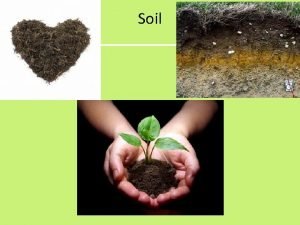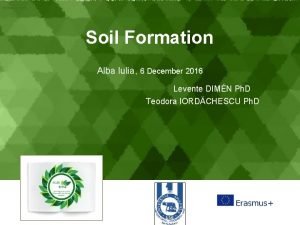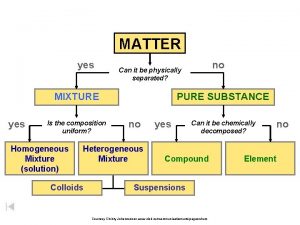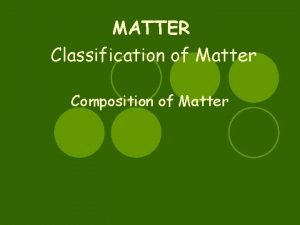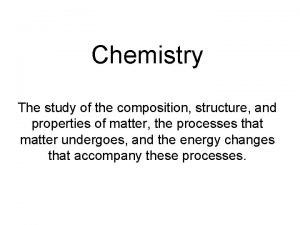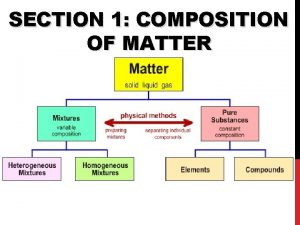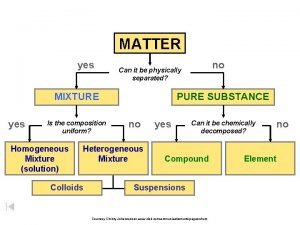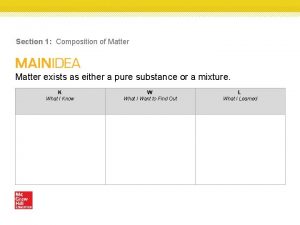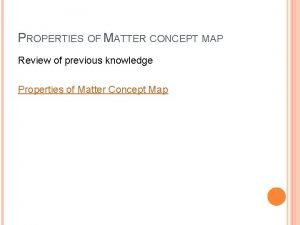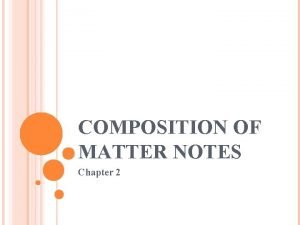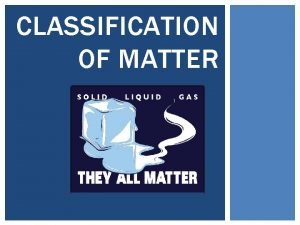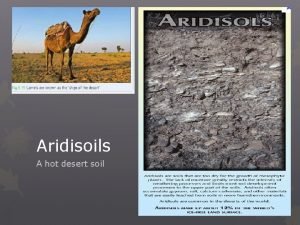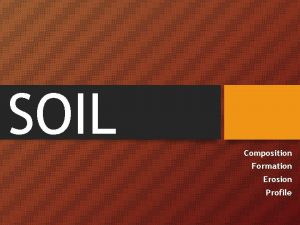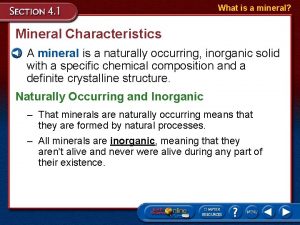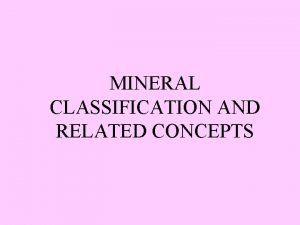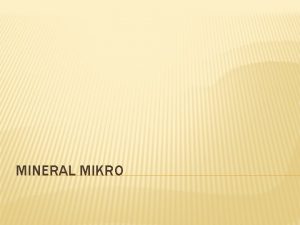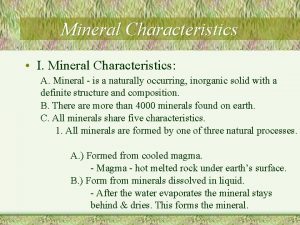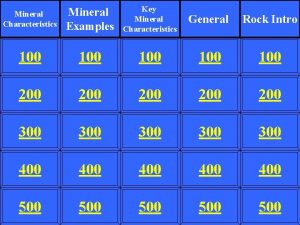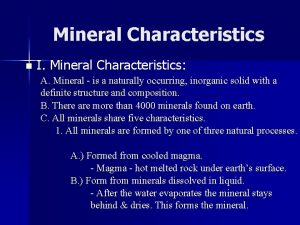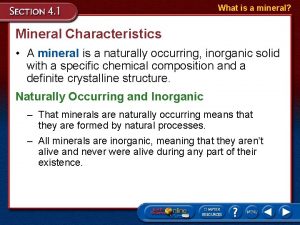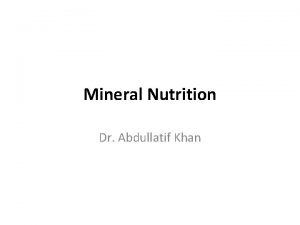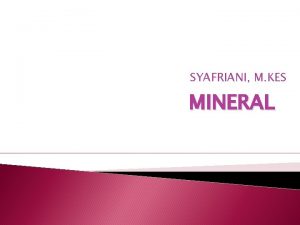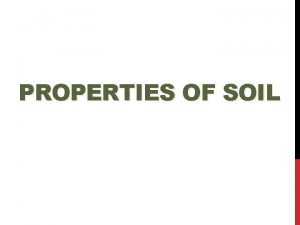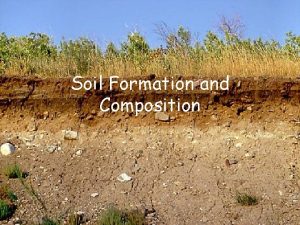Soil Composition Soil 4 major components Mineral matter



















- Slides: 19

Soil Composition

Soil • 4 major components – – Mineral matter – 45% Organic matter (humus) – 5% Water – 25% Air – 25% • Soil texture - type and amount of different sized particles found in the soil – texture determines how well the soil can grow crops

Soil Textures There are 3 soil textures, which are all based on the SIZE OF THE PARTICLES! Sand- Largest soil texture, feels gritty, you can see the grains (beach) Silt- Medium size, feels slippery, looks like small flakes (some river sediments) Clay- Very small, feels like dust, can’t see the individual particles because they are 1/20 th the width of a hair (pottery is made of this)

Sand (large, particles have lots of room between) Silt (medium, smaller than sand So they fit closer together) Clay (smallest, barely any space between each particle)

Soil Formation • Parent Material – the rock that is below the soil is broken-down. • Time – increase in time → increase in the amount of soil and thickness of the layer • Climate – wetter, hotter climates will break-down parent material quicker – Drier, colder climates will take the longest

Soil Formation (cont’d) • Plants and burrowing animals – create soil faster by leaving larger amounts of organic material • Slope - steep slopes tend to have less soil – less water and less plants – mountain slopes that face the sun tend to have more soil

Soil Formation

Soil Formation (cont’d)

Video

Stand up and find a person to talk about your favorite type of soil horizon and why 2 MINUTES

The Rock Cycle • Rocks are any solid mass of mineral or mineral-like matter that occurs naturally on Earth.

Types of Rocks *** Classified by how they are formed*** • Igneous – cooling and solidification of lava • Sedimentary – compaction and cementation of sediments • Metamorphic –heat and pressure

The Rock Cycle Thinking about relationships among the major rock groups… Where does all the energy from this process come from?

The Rock Cycle (cont’d) • The rock cycle does not always occur in a specific order. – Igneous rocks (Step 2) can directly become metamorphic rocks (Step 5).

Fig. 2. 9 MAGMA

Igneous rocks Formed when molten rocks cools down and hardens - Extrusive (ex means outside, forms outside the surface of earth) - Intrusive (in for inside, cools inside the crust) - Extrusive are Fine grained - cools rapidly - Intrusive are Coarse grained - cools slowly 16

Metamorphic rocks Formed when rocks are subjected to great quantities of heat and pressure below earth’s crust - Banded or Foliated - heat and pressure squished into flat layers - Non-Banded or Non-Foliated - heat and limited pressure, no layers from squishing 17

Sedimentary rocks Formed when sediments dry up and form layers, baking in the heat of the sun. Clastic - sediments are cemented together (sandstone) - Chemical - often times involves the evaporation of water from a solution(salt left behind in tide pool) 18

Erosion • Movement of sediment by • Wind • Water • Ice • Humans • Animals • Gravity
 Classification of matter section 1 composition of matter
Classification of matter section 1 composition of matter Classification of matter section 1 composition of matter
Classification of matter section 1 composition of matter Classification of matter section 1 composition of matter
Classification of matter section 1 composition of matter Components of soil
Components of soil Mineral vs organic soil
Mineral vs organic soil Uniform matter
Uniform matter Composition of matter which depends on temperature
Composition of matter which depends on temperature The study of composition structure and properties of matter
The study of composition structure and properties of matter Section 1 composition of matter
Section 1 composition of matter Uniform composition
Uniform composition Matter flow chart chemistry
Matter flow chart chemistry Composition of matter chapter 9
Composition of matter chapter 9 Section 1 composition of matter
Section 1 composition of matter Classifying matter concept map
Classifying matter concept map Composition of matter flow chart
Composition of matter flow chart Composition of matter notes
Composition of matter notes Properties of solids liquids and gases
Properties of solids liquids and gases A type of matter with a fixed composition
A type of matter with a fixed composition Soil composition pie chart
Soil composition pie chart Desert soil composition
Desert soil composition



